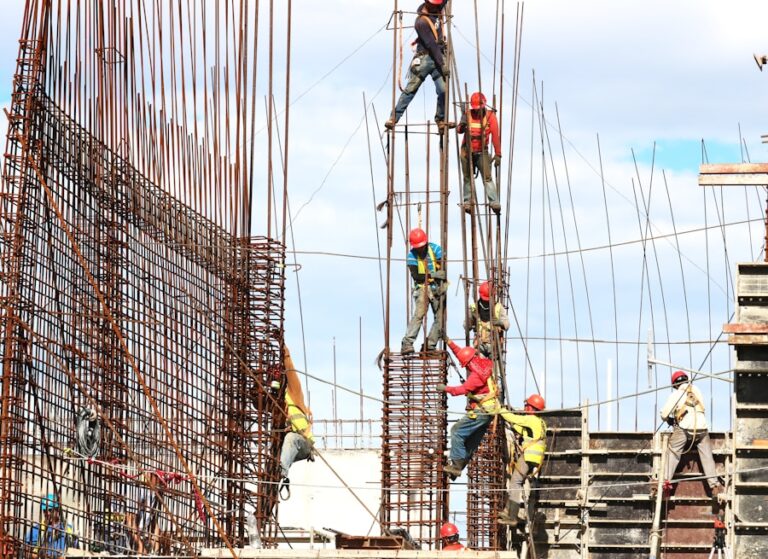Balinese architecture is a unique and distinctive style that is deeply rooted in the island’s rich cultural and religious traditions. The architecture of Bali is characterized by its use of natural materials, intricate carvings, and ornate detailing. Traditional Balinese buildings are designed to harmonize with the natural environment and are often built around a central courtyard or garden. The use of open spaces, natural light, and cross ventilation are also key features of Balinese architecture.
The traditional Balinese house, known as a “compound,” typically consists of several separate structures enclosed within a walled compound. These structures include a family temple, living quarters, kitchen, and a separate building for guests. The layout of the compound is designed to create a sense of harmony and balance, with each building positioned according to the principles of feng shui. The roofs of Balinese buildings are typically thatched with alang-alang grass or covered with terracotta tiles, and the walls are often made from locally sourced stone or wood. Balinese architecture also incorporates intricate carvings and decorative elements, such as ornate doorways, window shutters, and wooden beams, which are often adorned with symbolic motifs and patterns.
Incorporating Natural Elements
One of the defining characteristics of Balinese architecture is its seamless integration with the natural environment. Balinese buildings are designed to coexist harmoniously with the surrounding landscape, and natural elements such as water, plants, and stone are often incorporated into the design. Water features, such as ponds, fountains, and pools, are a common feature of Balinese architecture and are believed to bring prosperity and good fortune. In addition to providing a source of tranquility and relaxation, water features also serve a practical purpose by helping to cool the surrounding area through evaporation.
Plants and greenery play a central role in Balinese architecture, with lush gardens and tropical foliage being an integral part of the design. Balinese buildings are often surrounded by carefully landscaped gardens filled with colorful flowers, fragrant herbs, and exotic plants. The use of natural stone is also a prominent feature of Balinese architecture, with stone carvings, statues, and pathways adding a sense of texture and depth to the design. By incorporating these natural elements into their architecture, the Balinese create spaces that feel connected to the earth and provide a sense of tranquility and serenity.
Designing for Indoor-Outdoor Living
Balinese architecture is designed to embrace the concept of indoor-outdoor living, blurring the boundaries between the interior and exterior spaces. Traditional Balinese buildings are characterized by their open floor plans, large windows, and verandas that allow for seamless transitions between indoor and outdoor areas. The use of open-air pavilions, known as “bales,” is also a common feature of Balinese architecture, providing shaded areas for relaxation and socializing.
The concept of indoor-outdoor living is further enhanced by the use of natural materials such as wood, stone, and thatch, which create a sense of warmth and connection to the natural environment. Balinese buildings are also designed to maximize natural light and ventilation, with large windows and doors that allow for cross breezes to flow through the space. This emphasis on indoor-outdoor living reflects the Balinese philosophy of living in harmony with nature and creates spaces that feel open, airy, and connected to the surrounding landscape.
Balinese-inspired Interior Design
In addition to its distinctive architecture, Bali is also known for its unique interior design style that reflects the island’s rich cultural heritage. Balinese-inspired interior design is characterized by its use of natural materials, rich textures, and vibrant colors. Traditional Balinese homes are often decorated with handcrafted furniture made from locally sourced wood, such as teak or rosewood, which is intricately carved with symbolic motifs and patterns.
The use of textiles is also an important aspect of Balinese interior design, with colorful batik fabrics, ikat weavings, and handwoven baskets adding a sense of warmth and vibrancy to the space. Balinese homes are often adorned with traditional artwork and decorative elements, such as wooden masks, stone carvings, and ceremonial offerings, which reflect the island’s spiritual beliefs and cultural traditions. The use of natural light is also a key feature of Balinese interior design, with large windows and skylights that allow for an abundance of natural light to fill the space.
Sustainable and Eco-friendly Construction
In recent years, there has been a growing emphasis on sustainable and eco-friendly construction practices in Bali, as the island grapples with the environmental impact of rapid development. Many architects and builders in Bali are now incorporating sustainable design principles into their projects, using locally sourced materials, renewable energy sources, and green building techniques to minimize their environmental footprint.
One example of sustainable construction in Bali is the use of bamboo as a building material. Bamboo is a fast-growing and renewable resource that is both strong and lightweight, making it an ideal material for construction. Many architects in Bali are now using bamboo to build eco-friendly homes and structures that blend seamlessly with the natural environment. In addition to its environmental benefits, bamboo construction also provides economic opportunities for local communities by creating jobs and supporting traditional craftsmanship.
Another sustainable practice that is gaining traction in Bali is the use of solar power as an alternative energy source. With its abundant sunshine, Bali has great potential for solar energy production, and many new buildings on the island are now incorporating solar panels into their design to generate clean and renewable energy. By embracing sustainable construction practices, Bali is not only reducing its impact on the environment but also setting an example for other regions to follow.
Embracing Balinese Culture and Tradition
Balinese architecture is deeply rooted in the island’s rich cultural heritage and religious traditions, reflecting the Balinese people’s deep connection to their land and spirituality. Traditional Balinese buildings are designed to honor the island’s cultural customs and rituals, with each structure serving a specific purpose within the compound. The family temple, known as the “pura,” is a central feature of every Balinese compound and is dedicated to honoring the gods through daily offerings and ceremonies.
In addition to its religious significance, Balinese architecture also reflects the island’s social customs and traditions. The layout of a traditional Balinese compound is designed to create a sense of community and interconnectedness among family members, with separate buildings for different generations and communal spaces for gathering and socializing. The use of symbolic motifs and decorative elements in Balinese architecture also serves to honor the island’s cultural heritage and artistic traditions.
The Importance of Landscaping and Outdoor Spaces
In Balinese architecture, landscaping plays a crucial role in creating harmonious outdoor spaces that complement the surrounding environment. Traditional Balinese gardens are designed to reflect the island’s natural beauty and are often filled with lush tropical plants, colorful flowers, and serene water features. The use of water in landscaping is particularly significant in Balinese culture, as it is believed to bring prosperity and good fortune.
In addition to its aesthetic appeal, landscaping also serves practical purposes in Balinese architecture by providing shade, cooling the surrounding area through evaporation, and creating private outdoor spaces for relaxation and meditation. Many traditional Balinese homes feature outdoor pavilions or “bales” that provide shaded areas for socializing or enjoying the natural surroundings. The careful placement of trees, shrubs, and other greenery also helps to create a sense of privacy and seclusion within the outdoor spaces.
The importance of landscaping in Balinese architecture extends beyond individual homes to public spaces as well. Many hotels, resorts, and public buildings in Bali are designed with extensive landscaping that incorporates native plants and natural elements to create inviting outdoor environments for guests and visitors. By prioritizing landscaping in their architectural designs, the Balinese create outdoor spaces that not only enhance the beauty of their surroundings but also provide opportunities for relaxation, reflection, and connection to nature.
In conclusion, Balinese architecture is a unique and distinctive style that reflects the island’s rich cultural heritage, spiritual traditions, and deep connection to nature. By embracing sustainable construction practices, incorporating natural elements into their designs, and honoring their cultural customs and traditions, the Balinese have created a timeless architectural style that continues to inspire architects and designers around the world. Whether it’s through their use of natural materials, open-air living spaces, or vibrant interior design elements, Balinese architecture offers a glimpse into a way of life that celebrates harmony with nature and community.


















